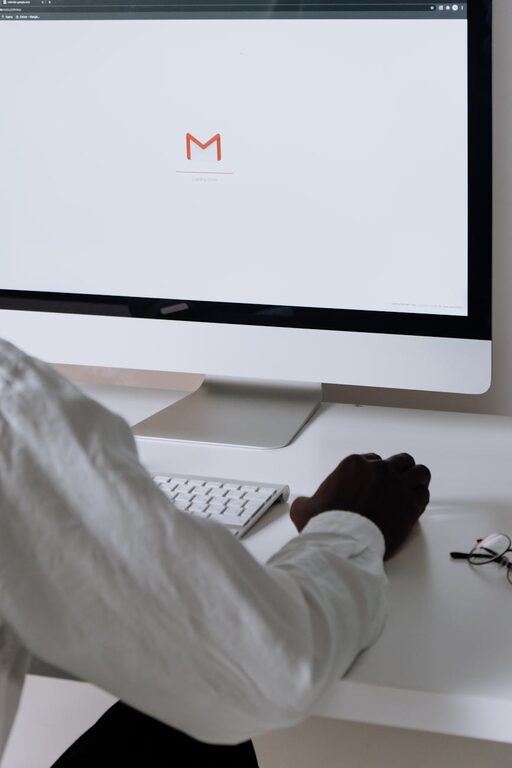Managing emails can feel overwhelming, especially with the constant flow of messages arriving every day. Without a clear system in place, your inbox can quickly become cluttered, making it difficult to find important messages and stay on top of your tasks. The good news is that with a few practical strategies, you can take control of your email and maintain a more organized, efficient inbox.
In this post, we’ll explore actionable tips and habits to help you keep your emails under control. Whether you’re a professional handling hundreds of emails daily or just want a cleaner inbox, these steps can make a significant difference.
Why Keeping Your Email Under Control Matters
An overflowing inbox can lead to missed deadlines, lost information, and unnecessary stress. Conversely, a well-managed email system can improve productivity, save time, and enhance communication. When your emails are organized, it’s easier to prioritize your work, respond promptly, and avoid feeling overwhelmed.
—
Step 1: Set Clear Goals for Email Management
Before diving into specific tactics, consider what you want to achieve with your email system. Common goals include:
– Reducing the number of unread emails
– Responding to important messages within 24 hours
– Minimizing time spent checking emails each day
– Keeping your inbox free of clutter
When your goals are clear, you can choose strategies that align with your priorities.
—
Step 2: Use Folders and Labels Effectively
Organizing emails into folders or using labels (depending on your email client) is a foundational step. Here’s how to do it efficiently:
– Create categories: Group emails by projects, clients, topics, or urgency.
– Automate with filters: Set up rules that automatically sort incoming emails into folders or apply labels based on sender or subject.
– Keep it simple: Avoid creating too many folders; a handful of well-defined categories works best.
– Archive regularly: Move older or completed emails out of your main inbox into archive folders to keep it tidy.
—
Step 3: Prioritize with Flags and Stars
Most email platforms offer ways to mark emails for follow-up or importance, using flags, stars, or similar icons. Use these features to:
– Quickly identify urgent or high-priority messages
– Create a to-do list directly in your inbox
– Separate emails that need replies from informational ones
Make sure to review flagged emails regularly to avoid forgetting tasks.
—
Step 4: Schedule Dedicated Email Times
Constantly checking emails throughout the day interrupts focus and reduces productivity. Instead:
– Set specific times to check your inbox (e.g., morning, midday, late afternoon)
– Use timers to limit email sessions, such as 20–30 minutes per session
– Turn off non-essential notifications to minimize distractions
By batching your email management, you can better concentrate on other work and reduce email fatigue.
—
Step 5: Practice the Two-Minute Rule
Inspired by productivity expert David Allen, the two-minute rule suggests this: if reading or responding to an email takes less than two minutes, do it immediately. This helps minimize the buildup of small tasks and keeps your inbox moving.
For longer or more complex emails, flag them for later handling during your dedicated email time.
—
Step 6: Unsubscribe Ruthlessly
Newsletters and promotional emails can quickly clutter your inbox. To keep your email flow manageable:
– Regularly review subscriptions and unsubscribe from emails you no longer read or find valuable
– Use tools or services that help identify bulk emails and simplify unsubscribing
– Consider creating a separate email address specifically for newsletters to separate them from work or personal correspondence
—
Step 7: Use Templates for Common Replies
If you frequently send similar responses, save time by creating email templates or canned responses. Many email clients allow you to store and insert these easily, reducing repetitive typing and improving consistency.
—
Step 8: Archive or Delete Emails Promptly
Decide how long you want to keep emails and either archive or delete them as soon as you’ve addressed or no longer need them. Some tips:
– Archive emails to preserve them without cluttering your inbox
– Delete emails that are no longer relevant or needed
– Empty your trash folder regularly to reclaim storage space
A routine cleanup habit prevents email overload.
—
Step 9: Use Search Features Efficiently
Instead of scrolling through your inbox endlessly, get comfortable using your email client’s search function. Learn to use keywords, sender names, date ranges, or subject lines to quickly locate messages.
Many email services also support advanced search operators, which can further refine results and save time.
—
Bonus Tips: Consider Email Alternatives
Sometimes, email is not the best communication tool. For quick questions or collaboration:
– Use instant messaging apps or team communication platforms
– Schedule brief video or phone calls
– Use shared project management tools that reduce the need for back-and-forth emails
Reducing the volume of emails can make managing the remaining messages much easier.
—
Conclusion
Keeping your emails under control is a manageable habit once you adopt the right strategies. By organizing your inbox, setting clear priorities, batching your email time, and reducing unnecessary messages, you can enjoy a calmer and more productive digital workspace.
Start small by implementing one or two of these tips today, and over time, you’ll notice a big difference in your email stress and efficiency.
—
Do you have your own favorite email management tips? Share them in the comments below!

